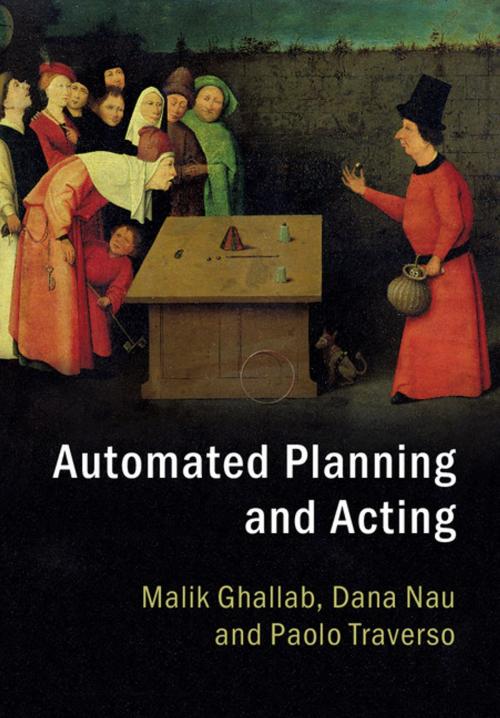Automated Planning and Acting
Nonfiction, Computers, Advanced Computing, Natural Language Processing, General Computing, Science & Nature, Technology| Author: | Malik Ghallab, Dana Nau, Paolo Traverso | ISBN: | 9781316718759 |
| Publisher: | Cambridge University Press | Publication: | August 9, 2016 |
| Imprint: | Cambridge University Press | Language: | English |
| Author: | Malik Ghallab, Dana Nau, Paolo Traverso |
| ISBN: | 9781316718759 |
| Publisher: | Cambridge University Press |
| Publication: | August 9, 2016 |
| Imprint: | Cambridge University Press |
| Language: | English |
Autonomous AI systems need complex computational techniques for planning and performing actions. Planning and acting require significant deliberation because an intelligent system must coordinate and integrate these activities in order to act effectively in the real world. This book presents a comprehensive paradigm of planning and acting using the most recent and advanced automated-planning techniques. It explains the computational deliberation capabilities that allow an actor, whether physical or virtual, to reason about its actions, choose them, organize them purposefully, and act deliberately to achieve an objective. Useful for students, practitioners, and researchers, this book covers state-of-the-art planning techniques, acting techniques, and their integration which will allow readers to design intelligent systems that are able to act effectively in the real world.
Autonomous AI systems need complex computational techniques for planning and performing actions. Planning and acting require significant deliberation because an intelligent system must coordinate and integrate these activities in order to act effectively in the real world. This book presents a comprehensive paradigm of planning and acting using the most recent and advanced automated-planning techniques. It explains the computational deliberation capabilities that allow an actor, whether physical or virtual, to reason about its actions, choose them, organize them purposefully, and act deliberately to achieve an objective. Useful for students, practitioners, and researchers, this book covers state-of-the-art planning techniques, acting techniques, and their integration which will allow readers to design intelligent systems that are able to act effectively in the real world.















